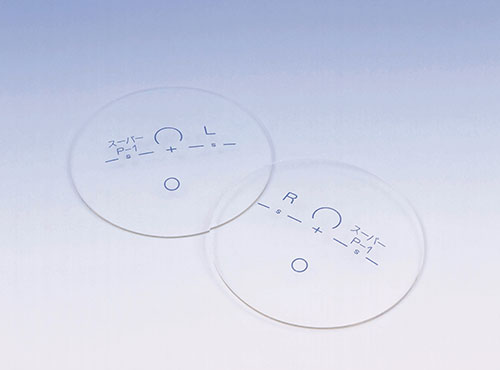Seiko Super P-1
World's first backside progressive addition lens
April 1997

The Seiko Super P-1, the world's first backside progressive addition lens developed by Epson, was released in April 1997. As the first lens to fuse the progressive surface and the cylindrical surface on the back side of the lens, the Super P-1 offered dramatically better optical performance than conventional (front-side) progressive designs. Epson was able to sharply decrease distortion and skew to the sides and bottom of the progressive corridor by minimizing the magnificaton difference between the distance portion and the near portion of the lens. Since the progressive surface was located closer to the eye by a distance equal to the thickness of the lens, the Super P-1 also offered wearers a field of vision that was brighter, clearer and approximately 30% wider than that provided by front-side progressive lenses.
During the development of this lens, moreover, Epson developed a high-speed numerically-controlled system that enabled free-form surfaces to be directly machined on lenses. This production technology sharply increased throughput compared to the conventional glass-molding process.
The Super P-1 has continued to evolve since it was first developed, helping to establish a new market in backside progressive addition lenses. In the process, the lens won the 2003-2004 Universal Design Prize among the Good Design Awards in Japan.


